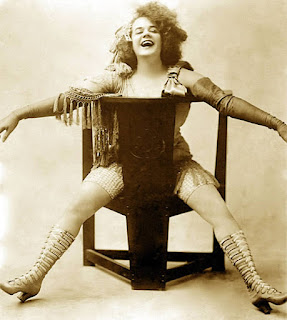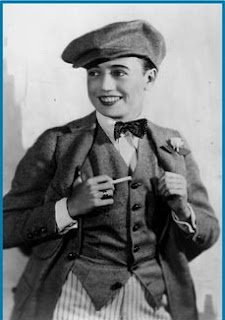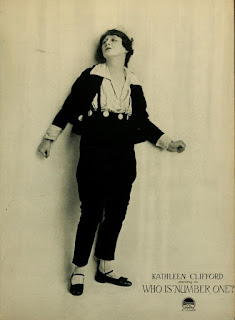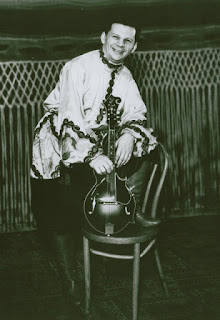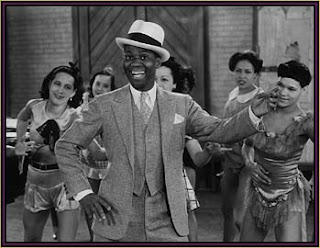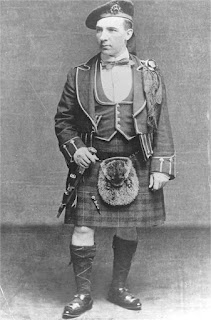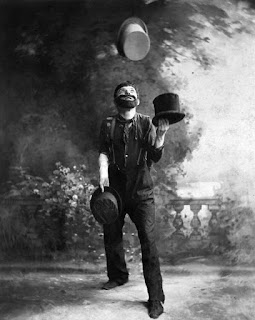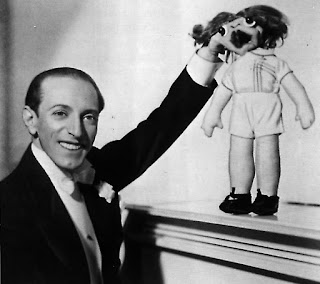Like there have been influential men and women in show business there
have also been duos and group acts that have helped shape the business.
It has been said many times, many ways where would we be without what
came before? Would we be enjoying the work of duo acts like Penn &
Teller or Siegfried & Roy, or even musical acts like Big & Rich
or Sonny & Cher.
The Dolly Sisters
The Dolly Sisters were more famous for their looks than talent; though these identical twins were cabaret queens. They were born Yanci and Roszika Deutsch on October 25, 1892 in Budapest, Hungary. Their parents, Julius (a photographer) and Margarethem, emigrated from Hungary to Brooklyn, New York when the sisters were five. Their mother urged them to start ballet training when they were young. When the rest of their family came to America, when they were thirteen their mother had them performing on the American stage. To their American audiences they were not known as Yanci and Roszika, but as Jenny and Rosie Dolly, their uncle managed them.
 |
| Jenny & Rosie Dolly Source |
They danced on Broadway, in plays and eventually in movies, they were regarded as one of the best sister acts. Their act had them wearing identical clothing and imitating each others movements to perfection; to accomplish the desired affect they would use mirrors, light and shadow techniques. Many said that the act didn't matter because they were purring mirror images of each other that audiences went wild for. The sisters combined innocence with a seductive racy side with their looks and vibrant personalities, they captivated men all over the world as they climbed from vaudeville to Broadway as a cabaret dancing act.
Their professional dancing career started early in the local beer halls, they debuted in the operetta The Maid and the Millionaire in 1907. Due to their age they had to wait a few more years before they could perform in New York. While they waited to be old enough to perform in New York, they joined the Orpheum vaudeville circuit, where they toured the Midwest until 1909. They took the Dolly name after a friend had told them that "they were cute as dolls."
Once they returned to New York they worked with the Keith vaudeville circuit. They were billed as "The Dolly Twins" when they joined the Ziegfeld Follies in 1911. During the Follies the sisters performed their dance routine as Siamese twins. Their personal lives became strained when they passed on an important audition for Oscar Hammerstein when they became international headliners. Harry Fox married Jenny Dolly in 1914, and he performed with them in the 1918 Broadway musical Oh, Look; where they sang "I'm Always Chasing Rainbows."
On August 19, 1916 at the Republic Theatre the sisters starred in His Bridal Night; a farce by Lawrence Rising and Margaret Mayo who revisited and elaborated it. There was one feature length film that the sisters starred in together, The Million Dollar Dollies it was released by Metro in 1917. They were in other films, just separately; Roszika was in The Lily and the Rose in 1915 and Yancsi was in The Call of the Dance also in 1915. They became regulars at the Palace from 1916 on wards, despite the critics complaints of their non existent singing abilities and their lack of change to their dance routines.
They were billed as rivals from time to time to bring in a larger income at the door. The sisters occasionally would team up, separately, with other people. One of the people that Rosie teamed up with was Martin Brown, and together they performed erotic Spanish ballroom dances that audiences adored them for. Though they did team up with people aside from each other those partnerships didn't last for very long, and it would bring Rosie and Jenny back together and they would be better than before. Most commonly during the 1920s the sisters were performing in music halls throughout Paris and London, instead of performing on New York stages. Sime Silverman had said, "As two dandy looking twins who cannot be told apart, with class and who can dance if they want to, the Dolly Sisters are always worth the price of admission just to look at"; when he wrote a review of one of their Palace appearances for Variety on February 24, 1922.
They married and divorced while they were still very young, and soon they became swamped with many devoted admires who would often become obsessed with the sisters. After their retirement in the late 1920s, the sisters put all of their attention on the social scenes. They became the downfall of many rich men, including Harry Selfridge. Harry Selfridge had proposed to Jenny Dolly at least once every month. When the free money started to dry up during the Depression, it started the sisters downfall. Neither of them had ever truly accepted that being celebrities and having fame could be fleeting.
In 1933 while driving along the French Riviera with her fiance, Max Constant, Jenny Dolly got into a serious automobile accident when they drove over a cliff. She survived the accident but she sustained heavy injuries, including one punctured lung, skull fracture, she displaced her stomach and the right side of her face was torn apart. During the next six weeks she went through many unsuccessful plastic surgeries, she almost died a few times during this. She survived the surgeries and she cursed the doctors for saving her. While she recovered physically, she never truly recovered mentally. She described herself as a broken shell, after everything sadly she was very broken and unhappy in the end. She was found dead in her Hollywood apartment where she had used the drapes to make a noose and h herself on June 1, 1941.
A feature film,loosely based on Rosie and Jenny's lives, titled The Dolly Sisters starring Betty Grable and June Haver was produced at 20th Century-Fox by George Jessel in 1945. Rosie would attempt and fail at suicide in 1962, she would die of a heart attack in New York on February 1, 1970. Variety would report that she told them her one philosophy in life had been "If you drink Scotch, make it Black and White. It will never hang you over."
George Burns & Gracie Allen
| George Burns & Gracie Allen Source |
George Burns had been born as Nathan Birnbaum on January 20, 1896 in New York. His first try at show business was when he was seven years old when he was part of the Pee Wee Quartet after his father's death. He took the first name George from his elder brother, Isidore, that he admired and who had been called George by his friends. He would later work with Abie Kaplan, and they became known as the Burns Brothers due to their habit of following the Burns Brothers Coal yard truck, hoping to pick up any coal that fell onto the streets from the truck.
He and Mac Fry would form the group Mac Fry and Company, when Burns was only thirteen years old. His next partnership came when he teamed up with Sam Brown in the act named Brown and Williams (named for a previous member of the act). Following that he appeared as Glide in Goldie Fields and Glide, afterwards he participated in the act titled The Fourth of July Kids. He explains why he changed his name so frequently in his autobiography I Love Her, That's Why!, he had stated that because of a booker for a theatre had threatened to not give him any more jobs if he knew who he was. To further the confusion of his many names, while he was part of an act called Burns and Links he was the one called Links.
Gracie Allen was born on July 26, 1906 in San Francisco, California to the song and dance man Edward Allen. She described her father as "the first and best clog and minstrel man in San Francisco." She had been on the stage since her childhood appearing with her father first, and then later in an act called Larry Reilly and company with her sisters Bessie, Pearl and Hazel. In that act she performed an Irish jig as well as sang during it.
When Burns was twenty-four his fortune with vaudeville started to improve. By this time he was teamed up with Sid Gary, who would later become popular on radio and be known for his high sopranos voice. This partnership lasted for two years before they split up, and Burns partnered up with Billy Lorraine. Their act was called Burns and Lorraine- Two Broadway Thieves, where they imitated Broadway stars like Al Jolson and Eddie Cantor. While they were working together, Burns was developing an act of his own. The last place they worked together was Union Hill Theatre in New Jersey. While they were there Burns approached the headliner, Rena Arnold, with his plan and a risqué story. The story offended her but she told her friend, Gracie Allen, that Lorraine was looking for a new partner and that she should approach him about it. Allen then watched the act but confused the two men, and asked Burns for a job. It wasn't until three days later that Allen realized her mistake.
Burns and Allen appeared together for the first time at the Hill Street Theatre in Newark, New Jersey in 1922. They would get married in Cleveland four years later on January 7, 1926. Originally they were billed as George N. Burns and Gracie Allen, with their original roles being Burns as the comedian and her as the straight role. It took very little time for them to change this to Burns being the established cigar-chomping straight man and Allen being the dizzy partner. As a team they were unrivaled in show business; and it wasn't simply based on their talent, though they had talent in spades, it was their ability to understand and utilize each medium of entertainment that they came across.
They started in vaudeville, and then moved on to radio, followed by movies and ending in television. The public, just like now, could make or break a performer; but they are also capable of adoring and cherishing an act. The latter was the case for Burns and Allen. Burns would ask the straight man questions and Allen would give a dizzy response; and no matter what he said she always had a response.
The first success that was big for them was a sketch written for them by Al Boasberg called "Lamb Chops". "Lamb Chops" was filmed in the summer of 1929, featuring a song titled "Do You Believe Me?" for Warner Brothers, it is now preserved at the UCLA Film and Television Archive. Aside from filing "Lamb Chops" in the summer of 1929 the duo went to England for twenty-one weeks. Several of these twenty-one weeks were spent in London doing performances at both the Holborn Empire and the London Palladium. The English took to the couple, especially Gracie, into their hearts. At their performances they were billed as "The Famous American Comedy Couple". The couple made a series of radio broadcasts for the BBC while they were in England.
Burns and Allen returned to the Palace in August and December of 1930 and April of 1931. Their BBC radio broadcasts was a happy prerequisite of things that were to come for the couple. CBS made them radio regulars in 1932, when they got signed to appear on the Guy Lombardo program sponsored by Robert Burns cigars at the time. It didn't take long for the couple to obtain their own show titled The Burns and Allen Show. The original set up of their show was a vaudeville-style entertainment show that would turn into a situation comedy in the early 1940s. The running joke of the show in the early 1930s was about Gracie looking for her lost brother, who was actually an employee of Standard Oil in San Francisco. The studio had them wonder in and out of other shows asking about her brother, who had hurt his leg by falling off an ironing board while he was pressing his pants.
When they filmed "Lamb Chops", their film career started. After "Lamb Chops" they started to appear in a series of Paramount features; including The Big Broadcast (1932), International House (1933), Six of a Kind (1934), We're Not Dressing (1934), The Big Broadcast of 1936, The Big Broadcast of 1937, Damsel in Distress (1937) and Honolulu (1939). While more commonly they were seen in films together, Gracie appeared in a few films by herself. The most notable film that she appeared in by herself was The Gracie Allen Murder Case in 1939.
Their radio show was successfully transitioned to television on CBS on October 12, 1950 after eighteen years on the radio. Their television show was thirty minutes long, and it was set up as a situation comedy. George and Gracie played themselves, the announcer Harry VonZell as himself, Ronnie Burns (their adopted son) as himself, Bea Benaderet as Blanche Morton (Gracie's friend and neighbor) and Larry Keating as Blanche's husband Harry made up the cast of the show. They would end every episode with one of their vaudeville routines and George's famous "Say Goodnight, Gracie". That last line would become one of the best known lines in TV history. The show ended when Gracie announced her retirement in September of 1958. George would continue with his own show featuring all of the same characters as the original show, after Gracie's retirement.
Gracie Allen died in Hollywood, California on August 8, 1964. After her death George continued his solo career, having success as a leading man in films and on the nightclub circuit. He would win the 1975 Academy Award for the best supporting actor for The Sunshine Boys. He recorded a few albums during his career, the first was "I Wish I Was 18 Again" in 1980 and the second was "As Time Goes By" in 1982. With the first album the title, "I Wish I Was 18 Again" became a hit single. With "As Time Goes By" he had recorded it and worked with Bobby Vinten.
It was July of 1992 when Burns announced his long-term commitment he had scheduled for his hundredth birthday was an appearance at the London Palladium. George Burns passed away in Beverly Hills, California on March 9, 1996 at the age of one hundred.
Pat Rooney Jr. & Marion Bent
 |
| Pat Rooney & Pat Rooney Jr. Source |
Pat Rooney, Jr. was born in New York on July 4, 1880 into vaudeville's great Irish family of entertainers. There was an old vaudeville joke that said "Just because I'm a fool, don't think I'm Irish"; this joke never seemed to apply to the Rooney family though. Jr's father, Pat Rooney Sr., was the most famous member of the family in the nineteenth century, though the entire family was talented. They all took the Irish stereotype of low brow comedy up to an entirely new level of artistry.
Though he had an Irish name Pat Rooney, Sr. was born in Birmingham, England in 1844. He made songs like "The Old Dinner Pail", "Katy is a Rogue", "Pretty Peggy" and "His Old High Hat" famous during his lifetime. In 1892 Patrick James Rooney Sr. died of pneumonia. His son and daughter, Pat and Mattie, were appearing together on the vaudeville stage in a singing and dancing act called Two Chips Off The Old Block by this time.
Pat Rooney, Jr. started professionally dancing at the age of ten, appearing with his father (Pat Rooney Sr.) and mother (Josie Granger). Jr took after his father by becoming a classic clog dancer who was best known for his routine called "The Daughter of Rosie O'Grady" (written by Monty C. Brice and Walter Donaldson). which he performed with his hands in his pockets and hitching up his trousers with a grin on his face. He and his sister, Mattie, advertised themselves as "The Premier Eccentric Dancing Act of the Business- Bar None" in 1900. With his height at five foot and three inches, and his pixie like looks he was often compared with a leprechaun. He had a devilish smile and divine dancing; W.C. Fields had said, "If you didn't hear the taps, you would think he was floating".
Marion Bent was born the daughter of cornet soloist Arthur Bent on December 23, 1879 in New York. Bent and Jr had met when they were both children; when they first appeared on stage together professionally in Mother Goose, "a musical extravaganza" written by J. Hickory Wood and Arthur Collins. It stared Joseph Cawthorn when it opened at the New Amsterdam Theatre on December 2, 1903. It wasn't long after this production that Pat and Marion married and became vaudeville's best-loved couple.
While Pat Rooney Sr held the family fame during the nineteenth century; it was Pat Rooney Jr and Marion Bent who delighted audiences in the twentieth century for fifty plus years. When they appeared on stage they would throw in some comedy while they danced and sang. In their sketch "Dances of the Hour", at the Palace Theatre in May 1925, they were accompanied by a chorus of seven dancing groups; this would occasionally be an occurrence of their acts. Though it was received by Variety almost always the same way as they had noted about "Dances of the Hour" on May 13, 1925 when they said that it was "crammed with superlative action." Bent and Rooney Jr had their son Pat Rooney III in 1909. When they performed together as a couple they would carry their son out on stage with them and he would carry on the Rooney family tradition.
Rooney Jr spent the time between 1915 and 1948 appearing in films and writing songs. He is the song writer responsible for the songs "I Got A Gal For Every Day In The Week" and "You Be My Ootsie, I'll Be Your Tootsie". Bent officially retired in 1932 due to advancing arthritis, but did come out for a special program at the Capitol Theatre on her wedding anniversary, April 10, 1935, to appear with Rooney. After she retired the couple's son, Pat Rooney III, replaced his mother and performed with his father in a double act. They would perform a precision dance while dancing with two men back to back. It had been very extraordinary and it has yet to be successfully copied. Rooney III performed as a single act after World War II.
His father filed a voluntary bankruptcy petition in February 1941. He didn't retire until 1950, and he was seen in many TV shows early on, and he was part of the original production of Guys and Dolls. Bend and Jr didn't have a happy marriage towards the end and the year before she died they officially separated. She passed away in New York on July 28, 1940. The father and son duo did reunite in 1956 in an appearance at the Palace. After which Jr returned to retirement until his death. He died in New York on September 9, 1962 at the age of eighty-two. His son continued his solo act until he too retired; after which he owned and ran a rather popular hot dog stand in Lake Blaisdell, New Hampshire until his death on November 5, 1979.
Bud Abbott & Lou Costello
Bud Abbott was born William Alexander Abbot on October 2, 1895 into a circus family in Asbury Park, New Jersey. Before Abbot and Costello met, Abbot managed burlesque houses. He also worked as the treasurer, the box-office manager,for other burlesque houses. During his time back stage he would study some of the top American comics, like W.C. Fields, Bert Lahr and the comic duo Bobby Clark and Paul McCullough. He met and married Betty Smith, a chorus girl, in 1918. She helped him produce his show Broadway Flashes and Bud started to work as a comic straight man.
Lou Costello was born Louis Francis Cristillo on March 6, 1906 in Paterson, New Jersey. When he was a young man he had admired Charlie Chaplin. He tried to start his show business career by joining the film industry in 1927 as an extra on set and stuntman. While he was doubling for leading lady Dolores Del Rio in 1928 there was an accident that left Costello injured. After this accident he quit his stuntman work and became a "Dutch" comedian in New York on the burlesque scene. Before this he had never worked on stage before, but he quickly rose to the top of the list of burlesque comics.
The two of them knew each other before they worked together; they possibly met as early as 1929. Occasionally through the 1930s they would work together. Through this time Abbott was working with Harry Evanson as a straight man and Costello was a straight man to Joe Lyons. In January of 1936 Abbott and Costello officially became a duo when the Minsky Brothers hired them to work in New York and Brooklyn burlesque theatres.
| Abbot & Costello Source |
As a duo they specialized in rapid fire patter and knock about slapstick comedy; and through this they became regarded as the archetypal team of burlesque comedy. Through their twenty years as a team; regardless of if they were on stage, in films, on the radio, or on television; their dynamics were the same. Abbott would portray the bully and schemer, while Costello would portray the hapless childlike patsy with catchphrases like "I'm a ba-a-a-a-d boy!" While their act was antiquated they were still able to entertain a generation of movie goers, and they became such a big part of American pop culture that they continue to amuse people into the present. Abbott and Costello are one of the few comedy groups credited with preserving, on film, many of American vaudeville's classic routines along with burlesque traditions.
During the summer seasons of 1936 and 1937 they worked at Atlantic City's Steel Pier. Late in 1937 the duo became part of a touring vaudeville show called Hollywood Bandwagon. Then in February of 1938 they appeared at Loew's State, New York; while at this appearance they met Ted Collins, Kate Smith's manager. After their radio debut on The Kate Smith Hour on February 3, 1938 Abbott and Costello obtained a national following. On March 24, 1938 they performed "Who's on First" on radio for the first time, though the skit had been part of their routine since roughly 1936. They continued to work with Kate on her radio show through the summer of 1940. Due to their work on the radio, they were chosen to star in the Broadway revue, Streets of Paris; which opened on June 19, 1939 at the Broadhurst Theatre. Between 1942 and 1949 they had their own radio show that originally aired on NBC and later transferred to ABC.
Their film debut came in the form of their supporting roles in the Universal Studios One Night in the Tropics, which was released in November of 1940. This was the first of thirty-six films that the duo made together, and only three of them were not produced by Universal Studios. The following year they stared in a film that better fit their talents, it was an army comedy titled Buck Privates. With the large success of Buck Privates they starred in an off branch series that lasted until 1956. Some of their better known comedies were: Hold That Ghost (1941), In the Navy (1941), Pardon My Sarong (1942), Lost in a Harem (1944) and The Naughty Nineties (1945). The film that is generally seen as their best film is Abbott and Costello Meet Frankenstein (1948); in this film they battle with famous Universal characters like Frankenstein's monster, Dracula and the Wolfman. The final film that they were in together, before they separated was Dance With Me, Henry in 1956. Costello appeared in The 30 Foot Bride of Candy Rock (1959) alone. Universal later, in 1965, produced a film titled The World of Abbott and Costello.
Their initial TV debut was on July 19, 1939 in the program called So This is New York which ran for fifteen minutes per episode. When their box office numbers started to slide their television popularity became renewed in the early 1950s. Between 1950 and 1955 they frequently appeared on The Colgate Comedy Hour. They were also the stars of their own show The Abbott and Costello Show (1952-54). After an appearance in December 1956 at the Sahara in Las Vega the team officially split up. Part of their break up came from the temporary lack of interest in their particular style of comedy. Later there was a renewed interest in burlesque-style entertainment that has resulted in the revival of interest in Abbott and Costello in the younger generations.
After the split Costello reprises some of their old routines for The Steve Allen Show. He continued his career as a comedian until his death. He passed away in East Los Angeles, California on March 3, 1959; three days before his fifty-third birthday. After the split Abbott refused to continue performing due to problems with the Internal Revenue Service. He made two appearances in the 1960s. One of these appearances was a dramatic role for television's GE Theatre in 1961. The other appearance came from a 1967 Hanna-Barber cartoon about Abbott and Costello; he provided his own character's voice. He did have a few personal appearances in the early 1960s while he worked with Candy Candido. He passed away in Woodland Hills, California on April 24, 1974 at the age of seventy-eight years old.
George & Bert Bernard
 |
| George & Bert Bernard Source |
Bert Bernard was born in Boston, Massachusetts on June 29, 1918; and his birth name was actually Herbert James Maxwell. He found fame on his own as a young dancer, who also played in the American vaudeville circuits and musical comedies before he became one of the Bernard brothers.
George Bernard was the dominant partner between the two, and before they paired up in 1932 his name had actually been Bernard George. They were billed as the Bernard Brothers, even though they were not brothers nor was their last name actually Bernard. It was 1935 when George had reversed his name in their singing and dancing act.
Their original act was just a dancing act with a ballet motif. At that time they were billed as the Bernard Dancers, performing more burlesque ballet routines. They performed all over North and South America and had several seasons overseas in Europe. Then in 1938 they topped the bill in Paris at the Folies Bergeres; they also made their London cabaret debut at Dorchester Hotel the same year. During World War II the duo temporarily split up while Bert served in the U.S. Air Forces. He served in combat duty in many of the theaters of war, and for his service he was awarded the Distinguished Flying Cross. While Bert was in the service, George continued as a solo act and for several years he entertained both American and Allied troops.
After the war they revived their act, and for a while they performed in England and France. While they were at a party in Chicago they started miming to gramophone records as a joke. Though later it would become a staple part of their act. It was a comedy mime act and with them parodying the Andrew Sisters and other female vocal groups of the era, they became an instant success.
With this new act they added a third, completely unseen, member to the act. The third member was George Pierce, and he controlled and operated the records backstage. In 1946 for ten months they appeared at the Lido in Paris, then in 1947 at the London Casino (currently the Prince Edward Theatre) they topped the bill. In Val Parnell's first Palladium pantomime Cinderella, in 1948; they topped this bill as well. Due to their popularity they returned sporadically throughout the early fifties to the theatre. They had similar popularity in Paris in cabaret; they had come to regard the Lido as their second home. They were one of the most popular comedy acts during the late forties and early fifties in British variety theatres.
Just as quickly as their miming act started it came to a sudden stop, when the record companies refused the duo permission to use their records. Despite this they continued to work as comedic dancers. While they were in the U.S. they were often seen performing at nightclubs in mainly three cities: those being Las Vegas, New York and Miami. They worked together until George's death on October 22, 1967, either at the age of fifty-five or fifty-six, in Vancouver, Canada after their final show of the night was finished titled Vive Les Girls at the Cave Theatre Restaurant. After George Bernard died, Bert continued the act with a new partner Les Bernard who was of no relation to George. Bert continued to work for majority of his time until his death on February 23, 2003 at the age of eighty-five.
The Duncan Sisters
| Rosetta & Vivian Source |
Rosetta Duncan, born November 23, 1894, and her sister Vivian Duncan, born June 17,1897, became one of the greatest sister acts to be seen on the vaudeville stage. The sisters were known and well loved for their wholesomeness, despite the rumors of Rosetta being an alcoholic lesbian and Vivian being married to a closeted gay man who had wanted to have her involved in three-ways.
Before they reached the height of their popularity they were more or less a conventional sister act. They started in 1916 with a yodeling act when Gus Edwards discovered them; one of their hit songs was a classic titled "Side by Side". The dynamics of the sister's act had Rosetta as the comedian and Vivian as the soubrette. They played in an act titled "'S that alright" at the Palace in 1922.
Even with the popularity of all of their acts, the Duncan Sisters were best known for their Topsy and Eva act; adapted from Harriet Beecher Stowe's 1852 anti-slavery novel Uncle Tom's Cabin. They continued to use this act even after it was considered impolite to appear in black face makeup. The first full production of Topsy and Eva was mounted in 1923 at the Alcatraz Theatre in San Francisco. They performed Topsy and Eva in England, France, Germany and South America; they even performed the roles in the language of the country that they were in at the time. In 1927 the sisters filmed Topsy and Eva as a silent film; but it was not successful due to the need to hear them to fully take in their talents.
It has been said that the film was an ill-conceived mess from the start. The director that started the film, Del Lord, often clashed with Rosetta which led to him leaving the project. It was over budget and behind schedule from the beginning as well. Lois Weber was offered an opportunity to direct the film but due to the racial content he refused the position. Eventually D.W. Griffith was brought in to finish the project; he finished and edited the material. The intake for the film was $353,000; it just barely covered the costs to make it, which was $340,000.
Aside from Topsy and Eva they appeared in two other films. They had a cameo in Two Flaming Youths in 1927.Then in the 1929 film It's a Great Life, they introduced the song "I'm Following You" and a risqué version of "Tell Me Pretty Maiden". They even worked for the legendary producer Florenz Ziegfeld in his 1928 rendition of Midnight Frolies. Also in the late 1920s they returned to the vaudeville stage singing songs from Topsy and Eva as well as singing songs like "Sitting on the Curbstone Blues" while wearing children's clothing.
During the summer of 1932, the sisters announced that they were planning to do series that they wanted to call Adventures of Topsy and Eva; although it never went beyond the proposal stage. Even without the series they continued to perform as Topsy and Eva long into the 1950s. They had stated that they were going into retirement in 1942, it didn't last for long. After their return they performed mostly at nightclubs.
Then while driving home after an engagement at Mangam's Chateau on the outskirts of Chicago on December 11, 1959 Rosetta's car struck a bridge; she would die a few days later at the age of sixty-five. After her sister's death Vivian started a solo career. Her Los Angeles debut was in December of 1960 at Billy Gray's Bandbox. She joined comedienne Alice Tyrrell to sing Topsy's lament "I Never Had a Mammy" from Topsy and Eva. Vivian would spend the last twenty years of her life in retirement. On September 19, 1986 "Eva followed Topsy up to heaven" at the age of eighty-nine. "In an era when stage stars were among the biggest names in show business, the Duncan Sisters ranked right up there with Eddie Cantor, Burns and Allen, Al Jolson, Sophie Tucker, Jack Benny, W.C. Fields, Marie Dressler, Fanny Brice, Marilyn Miller, Ed Wynn, Frances Williams and the Seven Little Foys."
So on vaudeville it didn't matter your race, ethnicity, gender, solo or group, siblings or couples everyone had a chance to perform. Not everyone made it famous or stayed famous, but some of these fore runners made a lasting impact on the business known as show business making the entertainment industry that we know and love today. Thanks to these and other past performers we have the wide variety of performances that make up some of modern entertainment.
Sources
Trav, S. D. (2010, July 04). Stars of vaudeville
Trav, S. D. (2009, December 17). Stars of vaudeville
Newley, P. (2004, May 10). Bert bernard. The Stage. Retrieved from https://www.thestage.co.uk/features/obituaries/2004/bert-bernard/
The duncan sisters. (2015). Retrieved from http://www.midnightpalace.com/articles/the-duncan-sisters
Abbott and costello: American comedic duo. In (2013). The Encyclopedia Britanica. Retrieved from http://www.britannica.com/biography/Abbott-and-Costello
Watson, S. The dolly sisters [Web log message]. Retrieved from http://www.streetswing.com/histmai2/d2dolly1.htm
De Lacey, M. (2012, October 31). Way before x factor: The identical twin sisters with little talent who danced their way to fame in the 1920s and ruined the besotted harry selfridge. Daily Mail. Retrieved from http://www.dailymail.co.uk/femail/article-2225685/Dolly-Sisters-Jenny-Rosie-1920s-cabaret-darlings-Broadway-ruined-Harry-Selfridge.html
